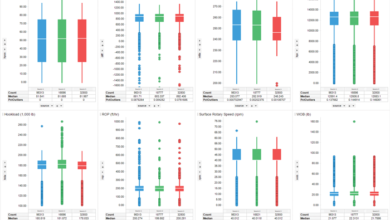H&P analyzes high-potential incidents to identify precursors, enhance reporting
By Kelli Ainsworth, Editorial Coordinator

The drilling industry has made tremendous progress in improving its safety performance over the past few decades. However, most people recognize that there’s still more to be done because incidents are still occurring, even if much more infrequently than before. While the majority of incidents don’t result in a serious injury or fatality (SIF), many of them easily could.
“How many times have we had a minor cut on the finger that needed three stitches, but if circumstances had been a little different, maybe we would have lost that finger or that hand?” Wade Deer, Offshore HSE and Training Manager for Helmerich & Payne (H&P), asked at the 2016 OSHA Oil and Gas Safety and Health Conference. The event was held on 29 November 2016 in Houston.
To drive continuous improvement in safety and further reduce incidents, H&P kicked off an analysis in 2015 of its workplace incidents to determine how many of them could have been serious or fatal. “We wanted to identify precursors that could have led to a serious injury or fatality and get ahead of the game,” Mr Deer said.
The company worked with safety consulting firm BST/Dekra to analyze 362 incidents, including near-misses, that took place between January 2014 and May 2015, determining the SIF potential of the events, whether they occurred during routine or non-routine work, and what precursors may have led to the incident. The analysis found that 31% of the incidents had the potential to become a fatality or serious injury, said Jorge Cortes, HSE Manager-International Operations at H&P.
Another finding revolved around the need to improve consistency in the handling of incidents. “We need to be consistent in the way we apply accountability, the way we use our process, and the way we report and in our metrics,” Mr Cortes said. In addition, the analysis revealed the need to focus on the potential, rather than the outcome, of an incident. For instance, two employees could sustain the same injury – a fractured wrist. One employee might have sustained this injury simply by tripping on their own feet in the parking lot, while another might have fractured their wrist working with machinery that could potentially have cut off their hand. While both incidents would be investigated, the second incident, which has high SIF potential, deserves greater scrutiny. “We will investigate every single one of them, but we want to focus more on those with SIF potential because we know that those things can kill,” Mr Cortes said.
Common precursors identified during the analysis included failures to recognize hazards, failure to follow procedures, using improper tools and a lack of adequate safety controls. H&P then developed and implemented the H&P Life Belts in Q1 2016, each life belt addressing a specific precursor. The life belts emphasize existing rules and procedures that employees must follow to remain safe on the job. These include: using cell phones and personal devices only when approved, wearing seatbelts in all rolling equipment, verifying the correct tools and equipment, achieving 100% tie-off when working at heights, always following the job safety analysis (JSA) and stopping the job when necessary.
Although H&P has built accountability into the life belt system, the company has worked to stress the potential safety risks associated with violations, not the workplace consequences. “We wanted people to understand that this is not about compliance – these are the things that can kill you,” said Mark Crelia, HSE Manager for South Texas Operations. “Every one of these (life belts) has been a factor in a serious incident we’ve had.”
In Q1 2016, H&P also implemented a decision tree to improve consistency and minimize subjectivity in incident reporting. The tree prompts incident investigators to ask the same set of questions and consider the same factors when determining the seriousness of an event.
Mr Crelia said the company has already seen more consistency in reporting since the tree’s implementation, but the work is not stopping there. Because various methodologies can be used for conducting incident investigations, results can vary, as well. H&P has now standardized the investigation process by requiring taproot investigations, which explore human factors and equipment-related causes of incidents. The seven-step investigation process encourages investigators to consider any organizational and cultural factors that could have contributed to an incident. “It’s been much more consistent and detailed in getting to the root cause of an event,” Mr Crelia said.
Beyond identifying incident precursors and standardizing investigations, H&P has also improved the types of corrective actions that are taken following an incident. Typically after an incident, the easiest response is to put up a sign telling employees not to do something that could harm them, Mr Crelia said. However, is that really an effective way to prevent future incidents? When possible, the contractor is now turning to engineering controls to remove the potential exposure. “We’re seeing much better corrective actions, and we’re really trying to remove the exposure that can kill or harm someone instead of just putting a sign up and saying don’t do this,” Mr Crelia said. “That’s been a huge win for us.” DC




